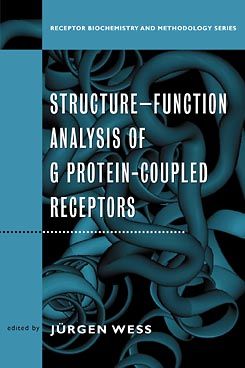G protein-coupled receptors (GPCRs) are the largest single class of receptors in biology, often playing key roles in a remarkably large number of physiological and pathophysiological conditions. GPCRs or GPCR-dependent signalling pathways are the targets of a very large number of therapeutically useful drugs. Detailed knowledge about the molecular structure of GPCRs should therefore pave the way for the design of novel drugs with increased efficacy and specificity.<br> <br> This volume provides a concise, up-to-date presentation of methods (including molecular genetic, biochemical, and biophysical) which have been used successfully in studying the structure and function of GPCRs. With contributions from international leaders in the field, the editor provides overviews of various techniques, followed by in-depth descriptions of basic procedures and discussions of critical experimental parameters.<br> <br> Divided into specific, accessible sections, Structure-Function Analysis of G Protein-Coupled Receptors includes:<br> * An overview of mutagenesis techniques<br> * Examples of molecular modeling techniques<br> * Using peptides as tools for the study of GPCR interactions<br> * Site-Directed Spin Labeling (SDSL) studies of the GPCR rhodopsin<br> * A complete description of the electron-crystalographic analysis of two-dimensional rhodopsin crystals<br> * The use of nuclear magnetic resonance techniques to study GPCR structure
Pre-clinical medicine: basic sciences
Structure-Function Analysis of G Protein-Coupled Receptors
₹26,033.00
This book is currently not in stock. You are pre-ordering this book.

